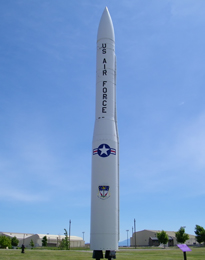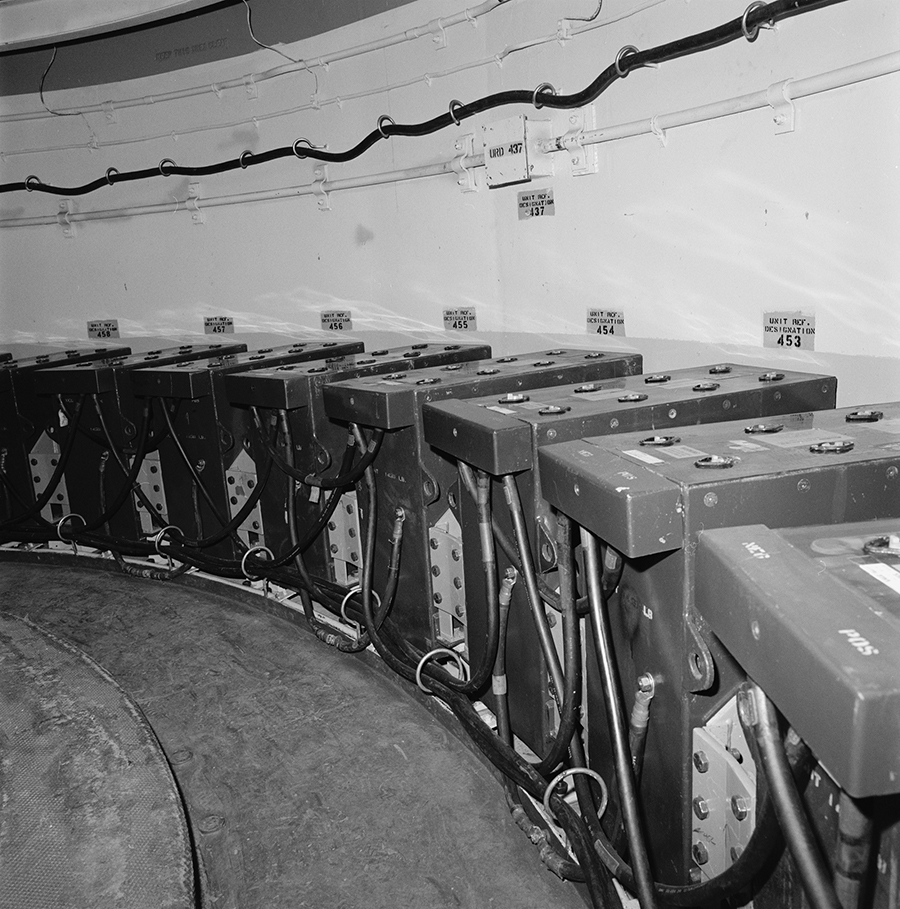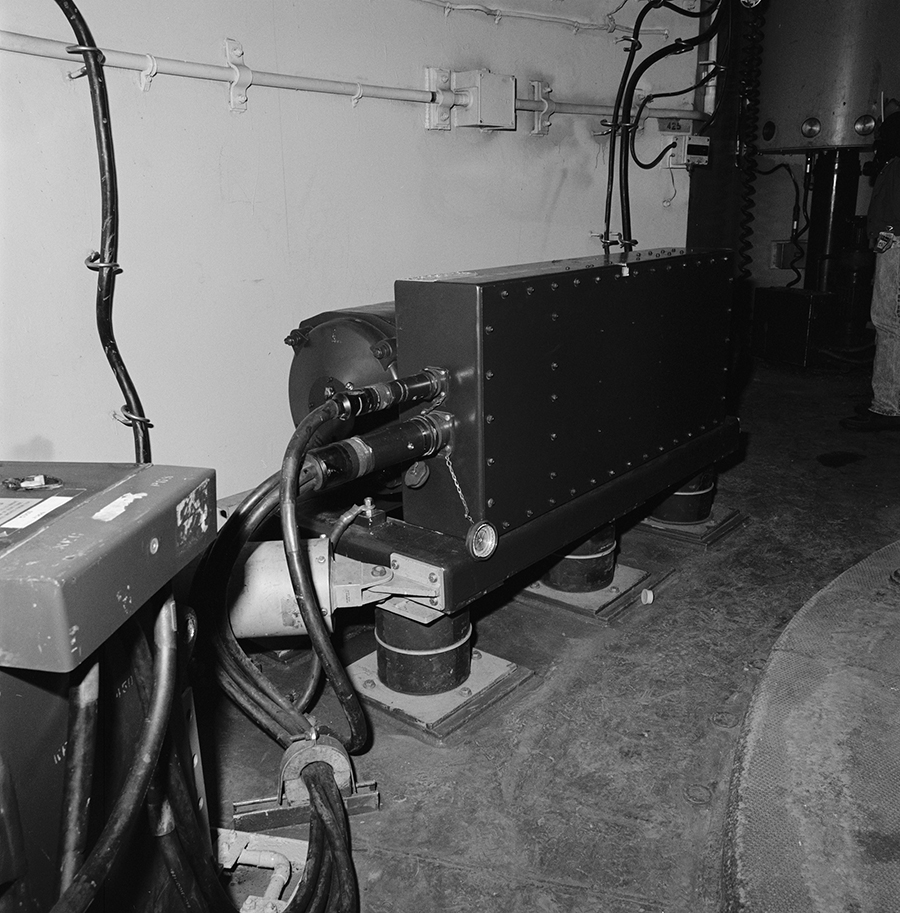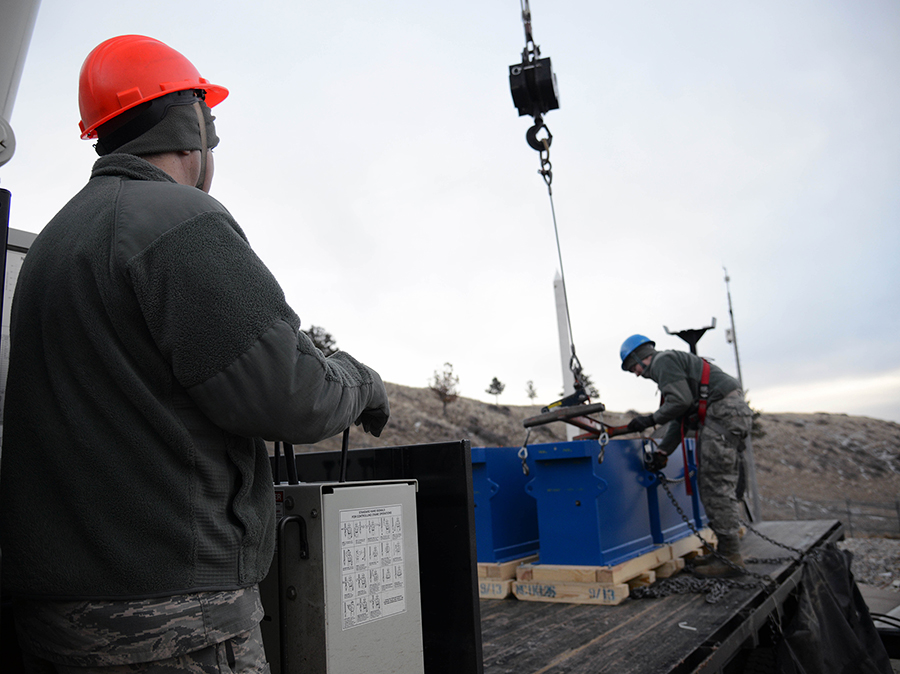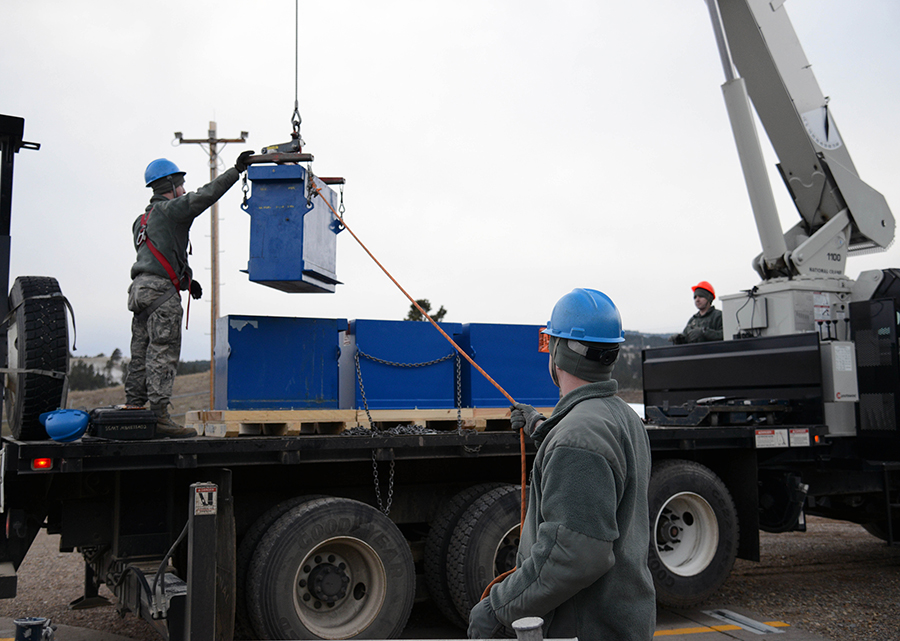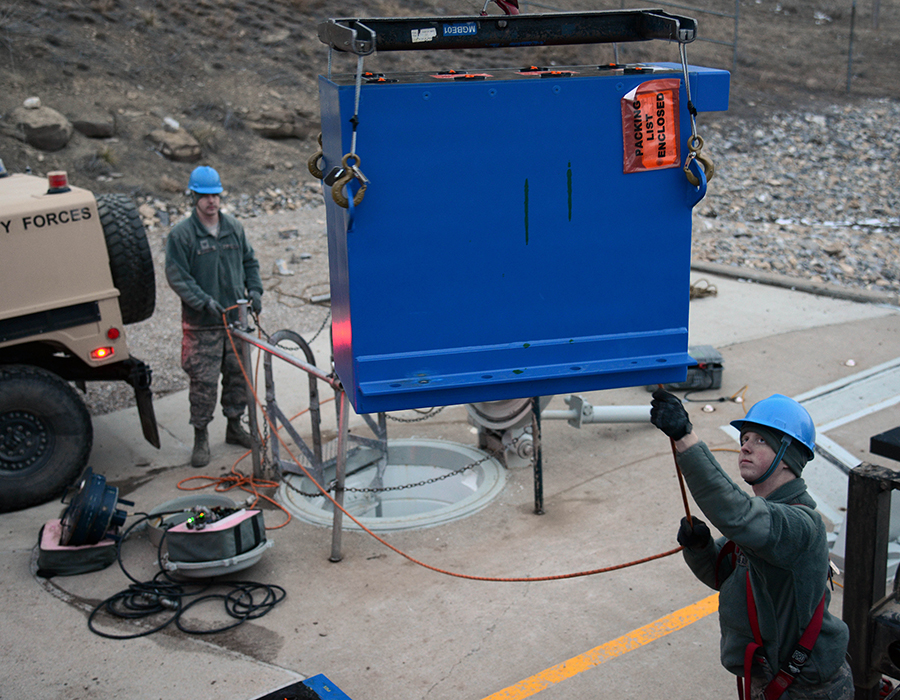Lower Level Launcher Equipment Room
The Ballistic Gas Generator is located in the Lower Level Launcher Equipment Room of the Launch Facility. Given the serious weight of the Launcher Closure Door (estimated to weigh 110 tons) the Air Force realized that to insure that if and when there was a need to launch, it was essential that the Launcher Closure Door can be opened completely without any obstacles. Be it dirt and rock that were thrown onto the closure door in a nearby nuclear blast, or if there were several feet of snow and ice blanketing the Launcher Closure Door, sufficient force was needed to have that door open completely to allow the Minuteman missile to launch.
The gas generator provides a significant amount of highly pressured gas, to force the Launcher Closure Door open. In the early days of testing the Minuteman Missile, the Air Force encountered one incident when it was launching a test missile at Vandenberg Air Force Base in California. The Launcher Closure Door was forced open so strongly by the gas generator, the door slid off its track and across the inner perimeter of the Launch Facility, taking out the chain link fence, and continued to pull the fence over the launch tube. This prevented the missile from being launched.
In the event that the Launch Facility lost both its commercial power source, and for whatever the reason, the backup generator in the Launch Support Building failed, these backup batteries would automatically kick in and provide the necessary power to keep the missile up and ready to launch. The batteries pictured here are lead acid batteries.
With the Minuteman I missile, the backup or storage batteries used in the Launch Facility were 32 volt. For the Minuteman II missile, the batteries were 160 volt. Contingent on the Launch Facility configuration, there were either 10 batteries used, or 12. The approximate weight of the earlier lead acid batteries was approximately 1500 pounds per battery.
This AC to DC generator is located in the Lower Level Launcher Equipment Room. Its function is as its name denotes. It converts the electricity coming in to the Launch Facility that is AC, and converts it into DC power. Note the bottom of the B Plug in the upper right of the photo.
Upgraded Backup Batteries
Web Page Author's Note In compiling images and photographs to be used within these web pages, the author would like to note that finding photographs that represent the most current components and equipment being used for the Minuteman missile can be a challenge. These Launch Facility emergency storage batteries are an exception.
As demand for more efficient, longer lasting storage batteries continued to be the focus of the Air Force, lithium-thionyl chloride batteries proved to be the choice for a long life, high amperage-hour battery. The Minuteman III and Peacekeeper missile began using these lithium batteries that were comprised of 3 lithium submodules each of which is made up of 3 lithium cells, for a total of 9 cells per battery. These 9 cells are combined to produce a 33 volt battery with 10,000 AmH capacity. These batteries have an advantage of having anywhere from 10 years to 20 years of shelf life.
Contingent on the silo configuration, the Launch Facility requires either 10 or 12 emergency storage batteries. In the late 1970s the Air Force implemented a program to increase the usable life of its emergency storage batteries. As a part of this program, given the name Minuteman Extended Survivable Power, the Air Force replaced four or six lead acid batteries (based on the launch facility configuration) with lithium batteries. These lithium replacement batteries significantly extend the emergency power source, which insures that the Minuteman weapon system can remain available to launch over a longer period of time.
The first contract for the engineering and development of a lithium battery went to GTE Sylvania, Inc. in March 1978. For 6 years, GTE Sylvania was the only company qualified by the Air Force to manufacture lithium emergency storage batteries.
A second company that bid for the engineering and development of a lithium battery was awarded to the Altus company, which occurred in 1984. One aspect of the Altus corporation that gained the Air Force's interest is that Altus had experience with military specification requirements and major weapon systems. Altus had already been established as a supplier of batteries for the Navy.
An impressive aspect of maintaining the Launch Facilities, requires that whatever new pieces of equipment and/or components that are being used, or the tools necessary to work on the LF, need to fit down through the Personnel Access Hatch. (Unless they open the Launcher Closure door - called "rolling the door" - which presents putting that missile at a more significant security risk, given how vulnerable the missile becomes with the door open allowing easier access) It would appear that this lithium emergency storage battery will not fit into the PAH access way, but these batteries were able to fit down past the PAH for installation.
